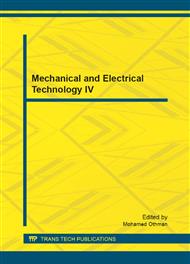p.126
p.130
p.134
p.138
p.142
p.147
p.151
p.155
p.159
Precipitation Characteristics of Scaling on Copper and Brass from 0.5mmol/l CaCO3 Solution at 60°C
Abstract:
Brass and cooper are widely used in heat pump water heater as heat exchanger between refrigerant and water, and the scaling is seriously at 60°C. Study the precipitation characteristics of CaCO3 is the first step to research anti-fouling technology. CaCO3 precipitated on brass and copper coupons from 0.5mmol/l CaCO3 solution by static reaction at 60°C. By weighing the coupons before and after experiments to get the mass of scaling and use Scanning Electron Microscope (SEM) to get the morphology. The results show that at the same condition there is more scaling on copper than brass; high pH not only makes more new crystal nuclei but also promotes square aragonite and calcite and square aragonite gradually recrystallizes to calcite; high pH makes both homogeneous and heterogeneous nucleation rate increasing, but the former increases more, so the scaling mass is bigger at low pH than high pH; under high temperature and supersaturation degree, very small and many crystals are the main substances covered metal surface and not big when scaling layer has been formed, but part of small crystals grow big and all three polymorphs existed but size and proportion were effect by temperature, concentration, pH and so on.
Info:
Periodical:
Pages:
142-146
Citation:
Online since:
November 2012
Authors:
Price:
Сopyright:
© 2012 Trans Tech Publications Ltd. All Rights Reserved
Share:
Citation:


